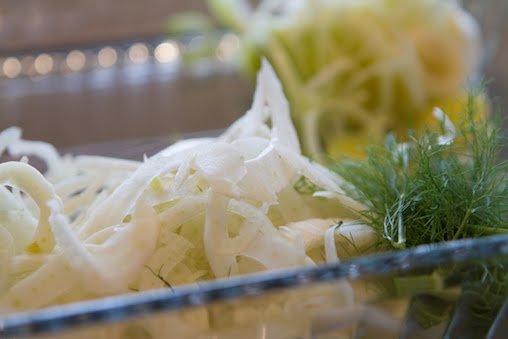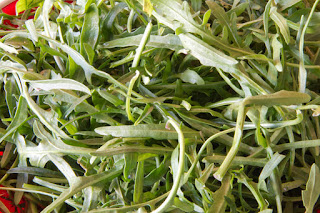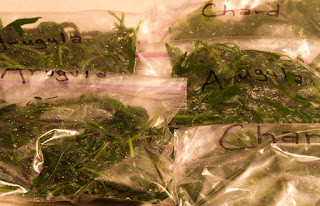
Photo courtesy of Brad Lovejoy
This recipe captured my interest the second I laid eyes on the title. Pork and coconut together in one pot? This could be my personal culinary heaven. As I started to read the recipe in detail and saw that two of the ingredients involved peanuts, I was brought back down to earth. I unfortunately have an allergy to peanuts so I have avoided all recipes that include them up until this point. For some reason, I suddenly had an aha moment and decided that cashews could be used in place of peanuts. I was not sure how the flavor of cashew butter and roasted cashews would translate into the soup but I was confident that the textures would at least be similar. With this adaptation in mind, I set out to prepare the following recipe.
2 1/2 pounds bone-in pork shoulder
1/3 cup packed brown sugar
4 garlic cloves, minced
coarse salt
3 Tbsp olive oil
2 medium onions, finely diced
2 1/4 cups dry red wine
28-ounce diced tomatoes
1/3 cup creamy natural peanut butter
1 quart chicken broth
2 Tbsp balsamic vinegar
1 Tbsp Dijon mustard
2 tsp fish sauce
1 Tbsp fennel seeds
2 tsp aji chile paste or sambal paste
3/4 cup canned coconut milk
freshly ground black pepper
1 small lime, juiced
1/3 cup roasted, salted peanuts, chopped
1/2 cup loosely packed cilantro, chopped
Rub pork with brown sugar, one third of garlic and one teaspoon salt. Place in glass bowl, cover and refrigerate overnight. Preheat oven to 350 degrees.
Heat 1 tablespoon oil in large pot or Dutch oven over medium-high heat. Add pork and brown on all sides. Remove pork and set aside. Add 1 tablespoon more oil to pot and lower heat to medium. Add half of onions and another third of garlic and sweat by cooking until onions are translucent, about 5 minutes. Pour in 2 cups of wine, increase heat to simmer and reduce liquid by half.
Reserve 1 cup of tomatoes and add rest to pot. Add peanut butter, stirring until it melts into the liquid. Add broth, vinegar, mustard, fish sauce, fennel seeds and chili paste. Bring liquid to boil, add pork back in, cover pot and transfer to oven. Braise pork until the meat is very tender, 3 to 3 1/2 hours.
Remove pork from liquid and set aside to cool slightly. Strain liquid and skim off fat with slotted spoon (alternatively, let the liquid cool completely in refrigerator and skim off fat cap that forms once it is cold). Pull meat away from the fat, discarding fat. Cut meat into bite-sized pieces. Heat remaining tablespoon oil in medium pot over medium-low heat. Add remaining onions and garlic and sweat by cooking them until onions are translucent, about 5 minutes. Add remaining 1/4 cup wine, increase heat to medium-high and reduce liquid by half. Add reserved 1 cup tomatoes and strained soup liquid. Simmer to reduce by one third, about 15 minutes.
Stir in meat and coconut milk. Simmer soup for additional 15 to 20 minutes so flavors come together. Season with salt and pepper. Divide soup among bowls, squeeze a bit of lime juice over each serving and sprinkle with chopped peanuts and cilantro before serving.
This is officially one of my top ten culinary masterpieces since I started this cooking project. The recipe also qualified for my top ten most labor intensive endeavors. It all started yesterday afternoon when I applied a rub to the pork and put it in the refrigerator to marinate overnight. Preparation continued over a five hour period today. The recipe had it all; sauteeing, browning, simmering, braising, boiling, reducing and straining. I have to say, I loved every minute of it. This is the type of recipe I truly enjoy preparing. There is something about starting with a long list of ingredients, an even longer set of instructions and ending up with a beautiful meal.
This recipe is particularly interesting because it incorporates Asian and Italian influences. I wasn't sure how fennel, Dijon mustard, red wine, fish sauce, coconut milk, chile paste and balsamic vinegar would meld together but as they slow-cooked, the flavors combined exquisitely. The dish was also aesthetically pleasing and the aroma was a heavenly mix of red wine, fennel and garlic. Finally, the overall flavor and texture were phenomenal. The soup was rich and creamy but most importantly, the flavor was saturated and complex. I didn't even touch on the texture of the pork yet. If you can imagine the most tender pulled pork you have ever eaten, this pork was that good or even better. It practically fell apart in my hands and melted in my mouth.
The only change I made to the recipe was substituting cashew butter and cashews for peanut butter and peanuts. The cashew butter melted easily into the soup and the cashews provided the perfect crunchy element to the final product. If you have a lot of ambition and five hours to burn in the kitchen (figuratively, not literally :), I highly recommend this recipe.
Recipe Source:
"Girl In The Kitchen" by Stephanie Izard
Pages 82-84


























